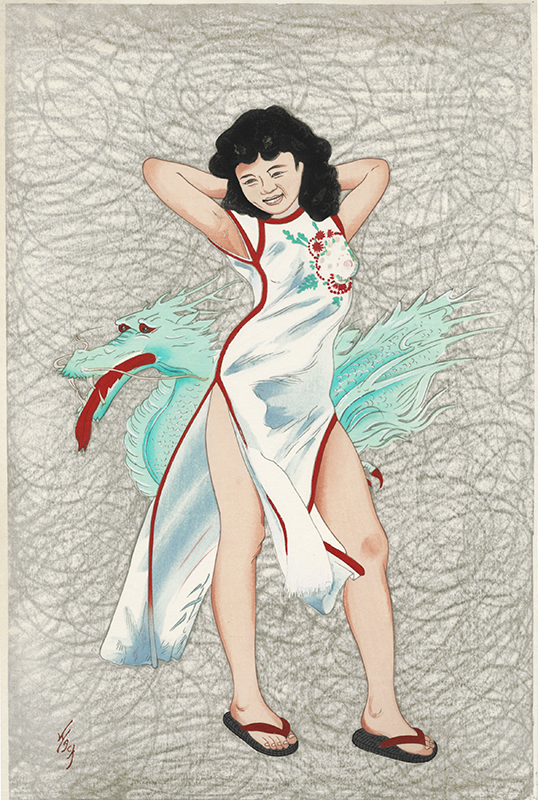
19th, 20th & 21st Century Fine Prints
707-546-7352 · fax 707-546-7924 · web: www.annexgalleries.com · email: artannex@aol.com
Chinese Bijin and Dragon by Vincent Hack

Chinese Bijin and Dragon
Vincent Hack
Chinese Bijin and Dragon
Vincent Hack
1913 - 2001 (biography)Vincent Hack was a military medical illustrator who trained in color wodcut techniques under Hiroshi Yoshida. While stationed in Japan in 1948, Hack came across the works of Yoshida, who by then was among the most well known color woodcut artists in Japan. Yoshida wasn't willing to work with Hack at first, but Hack's persistance finally swayed the Master Printer to teach him color anaysis -- in exchange for Hack's English translations of ad copy upcoming exhibitions, a necessity in a growing Western market.
"Chinese Bijin and Dragon" perfectly encapsualtes a time of global change, when American and Japanese culture began to merge in the places where military occupation was a reality of daily life following the devastation of the Second World War. Hack attempts to combine Western pin-up kitsch - a staple for lonely soldiers in far-flung conflicts - with Southeast Asian beauty standards and symbolism, bordering on cultural confusion. Despite this, Hack's composition is expert, employing advanced techniques that are difficult to master such as bokashi (color gradation) or were new to the 20th century, such as sujizuri, the "swirls" created by turning the baren on its side to produce texture.


